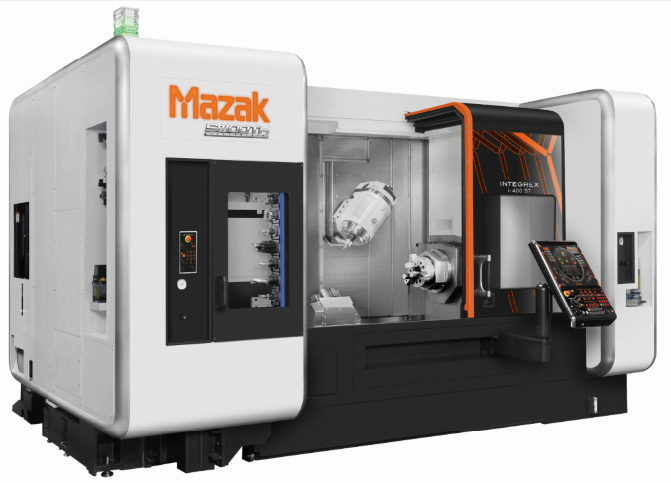The automotive supply chain is highly demanding of its component suppliers. We examine the specific machining challenges that suppliers face and offer some solutions.
The global automotive sector has rebounded rapidly from the economic slowdown with production rising year on year. Light vehicle production alone is forecast, by Statista, to rise from 93.2 million units in 2016 to 107.4 million units by 2020.
This ramping up of production will inevitably place greater strain on the automotive supply chain, particularly those lower tier suppliers who have to combine quality of component with precision and speed of manufacture, in order to cater for the urgent demands and just-in-time logistics of the industry.
The breadth of components manufactured for the automotive sector is enormous, from basic suspension brackets, steering knuckles and brake calipers through to engine components, such as cylinder heads and turbochargers, all the way to differential housings, gears and axle shafts. Whats more, the range of different metals required by the sector goes all the way from heat resistant alloys through to cast-iron.
Within the sector there is an increasing requirement for heavyduty machines that are capable of tackling large workpieces. For this type of application the Mazaks HCN Series of machines, combine large pallet sizes with high rigidity construction capable of handling the power of a 40 or 50 taper spindle, depending on the variant.
HCN-5000/50, for example, is a highly agile machine capable of handling large prismatic workpieces, with the benefit of having tool holding capacity for large diameter/lengths tools used, for example, in block applications. The machine is equipped with a powerful 10,000rpm, 50 taper 37kW spindle and is capable of rapid traverse rates of 60m/min to maximise productivity and reduce non-cutting time.
At the volume end of automotive component manufacturing, productivity and reliability are key success factors. The QUICK TURN PRIMOS (QTP) is aimed specifically at the automotive subcontracting market and is capable of rapid traverse rates of 30 m/min in both the X- and Z-axes, which means fast cycle-times for high accuracy components.
The design of the machine enables easy chip removal from the rear, which allows multiple machines to be closely located together optimising machine shop floorpsace utilisation. There is an optional integrated gantry loader available on all PRIMOS variants,for automated loading with larger batch sizes. The QT PRIMOS is equipped with direct a drive spindle, which are standard on Mazak machines due to their superior performance which again aids cycle times and machine uptime.
Small machine footprint is critical for high volume automotive suppliers. The VERTICAL CENTER PRIMOS, is a compact, high speed vertical machining centre capable of exceptionally high metal removal rates.
Power is supplied by a 12,000rpm/ 11kW spindle with 30 taper interface that delivers high-productivity performance with lower tooling investment costs; an optional 20,000 rpm spindle is also available for higher speed applications. The machine also boasts high speed, 60m/min, rapid traverse and fast tool change to further enhance productivity. Crucially, like the QT PRIMOS, the machine has a space saving design (1,280mm width) and rear chip conveyor discharge.
When a more sophisticated turning solution is required, Mazaks MULTIPLEX series, specifically designed for mid-size lot production, is often the machine of choice for automotive component manufacturers. The MULTIPLEX combines two turning centres with milling capacity to perform a variety of machining tasks, such as continuous/simultaneous machining carried out on both spindles, and automatic workpiece transfer from one spindle to another. This ability to use both spindles is a major aid to production performance.
Additionally, set-ups can be performed as well as workpiece loading/unloading on one spindle, whilst machining is being performed on the other, which minimises machine downtime.
A further option is the HYPER QUADREX, a twin-turret, -twin spindle turning centre designed to reduce cycle times, when machining bar material for components, used in hydraulic systems. The combination of a high speed spindle along with simultaneous first and second operations, along with balanced cutting by upper / lower turrets, result in considerably reduced cycle times compared to one turret / two spindle turning centres.
However, performance often needs to be combined with highly accurate machining to ultra-tight tolerances. With this type of application, Mazaks IVS, an inverted vertical spindle turning centre is one solution, offering maximum stability and accurate positioning for high-volume production applications. With this machine, the headstock moves to the incoming conveyor to pick up the workpiece, in turn reducing cycle time and additional costly robotics.
Reducing
in-process time down to a minimum is a critical factor for the automotive
supply chain and multi-surface, 5-axis machining, capable of what Mazak call a
DONE-IN-ONE solution, is becoming more and more prevalent. Mazaks flagship
INTEGREX i-series has become an increasingly popular solution, capable of
machining complex shapes in a single set-up, which in turn increases
productivity and saves time on fixture preparation.

The demanding nature of the automotive sector, both in terms of lead times and applications, means that a one-size-fits-all machine philosophy is impossible. The differences in machining small turned components, compared to large diameter long shaft workpieces, requires machines with very different capabilities. Our advice is to partner with a machine supplier that can offer the necessary breadth of machines and application support that will enable you to choose the best machining solution.

